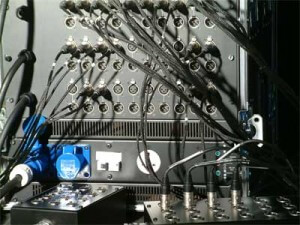Key Elements : Mechanical Properties
The build of a cable

One of the fastest ‘rule of thumb’ methods of testing the integrity of a multi-way cable is to take a length, twist it, tie a knot in it and then untie it. If there is no kink or twist left on the cable the chances are that it would be a good deployable cable with a long life span.
The way the elements of a cable are bundled is one of the main contributors to flexure and longevity. For long life, each element should be able to move against the others when the cable is flexed and return to its original position when straightened. Slip agents such as Talc and Silicon slip are often used to promote this. In a good cable the components are counter twisted so that no matter how the cable flexes, the stresses on each element gets distributed in the cable.
Jacket materials need to be selected for the environment. PVC (polyvinyl chloride) is the most common and is a flexible and robust material. PVC can be combined with other materials to alter its properties. This is how low temperature, extra flexible microphone cable jackets are made.
Polyurethane (PUR) is much tougher but stiffer and can even resist knife blades. Technicians and riggers dislike it because it’s so hard to work with. However, it resists water and many chemicals and makes extremely rugged cables. PUR can also be combined with other materials to make it more flexible.
Often low smoke and zero halogen jackets are specified for public places. These materials are expensive and stiff, so it is worth a note that ‘low fume’ cables are acceptable in some environments. These give very low levels of halogen and fume when burnt, they are easier to work with and considerably cheaper. However, they must be accepted by the prevailing authorities for the site.